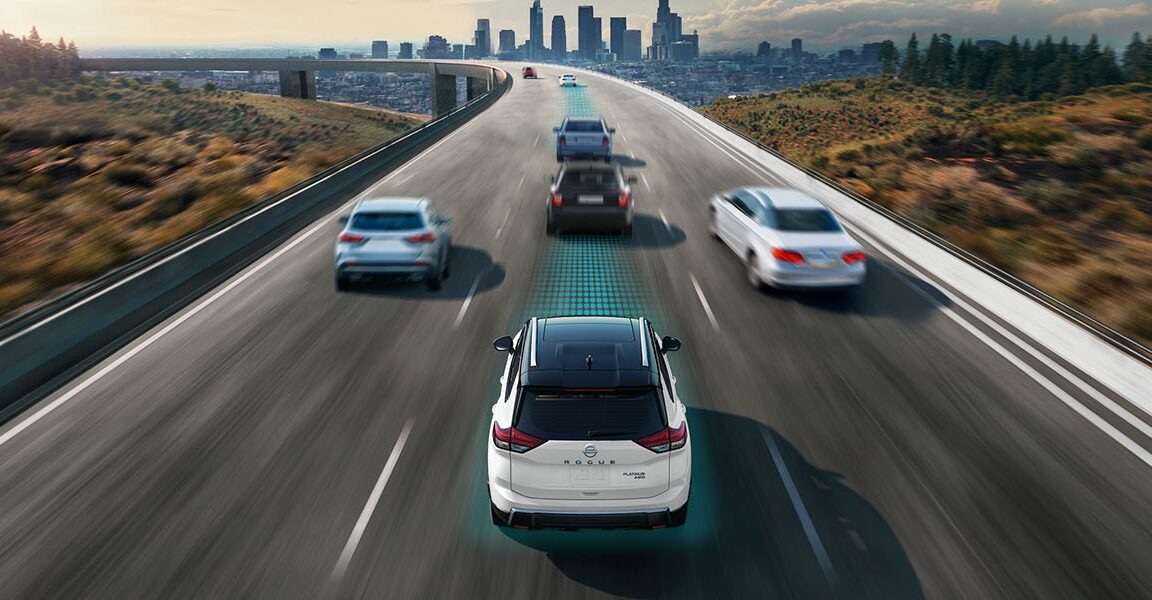Nissan's Cooperative Adaptive Cruise Control Aims to Ease Traffic Jams

Key Points
- Nissan’s CCM lets a lead car share speed data with following Nissan vehicles.
- Following cars maintain a 30‑ to 60‑second gap to smooth deceleration.
- The system uses LTE modems and cloud connectivity, not DSRC.
- Jerry Chou describes CCM as a "mixed autonomy" solution.
- Simulations show traffic benefits at just 4‑5% vehicle penetration.
- Future updates will provide drivers with feedback on slowing events.
- Nissan may license CCM technology to other automakers.
Nissan is testing a Cooperative Adaptive Cruise Control system (CCM) that lets a lead vehicle share real‑time data with following Nissan cars, even when non‑CCM vehicles sit between them. By maintaining a 30‑ to 60‑second gap and smoothing deceleration, the system seeks to curb the stop‑and‑go waves that cause congestion. Senior researcher Jerry Chou describes the approach as “mixed autonomy,” using embedded LTE modems and cloud connectivity rather than DSRC. Simulations suggest noticeable benefits at just 4‑5 percent market penetration, and future plans include driver feedback and potential licensing to other automakers.
How CCM Works
Nissan’s Cooperative Adaptive Cruise Control (CCM) relies on a "probe" vehicle at the front of a traffic stream to broadcast its speed and position data. Following Nissan cars equipped with CCM receive this information, even if non‑CCM vehicles separate them. The data enables each CCM‑enabled car to keep a following distance of roughly 30 to 60 seconds, allowing it to decelerate gradually when traffic ahead slows. This smoother braking reduces the rapid speed changes that typically generate congestion‑inducing “concertina” effects.
Technical Approach
Senior researcher Jerry Chou, based at Nissan’s Silicon Valley Center, characterizes CCM as a form of “mixed autonomy,” meaning the system operates alongside conventional human‑driven vehicles. Rather than relying on Dedicated Short‑Range Communications (DSRC), the cars use their built‑in LTE modems to exchange data via Nissan’s cloud platform. This choice leverages existing cellular infrastructure and avoids the need for specialized short‑range hardware.
Adaptive cruise control traditionally faces a trade‑off: a larger following gap can invite cut‑ins from other drivers, prompting abrupt deceleration. Nissan engineers have tuned CCM parameters to balance gap size with traffic flow stability, aiming to keep the system effective without encouraging disruptive lane changes.
Simulation Results and Penetration Rates
In internal simulations, Nissan observed that the benefits of CCM scale with the percentage of equipped vehicles on the road. Notably, the system began delivering measurable congestion relief at a penetration rate of roughly four to five percent. While higher adoption would amplify the impact, these early results suggest that even modest deployment could improve traffic conditions.
Future Directions
Looking ahead, Nissan plans to add driver‑feedback mechanisms that explain why a CCM‑enabled car is slowing, helping human drivers avoid counter‑productive actions such as manually accelerating. The company also envisions licensing the technology to other automakers, potentially extending the mixed‑autonomy benefits across a broader vehicle fleet.
Challenges and Ongoing Testing
The current experimental program involves a limited number of CCM‑equipped vehicles, which constrains the ability to observe large‑scale effects in real traffic. Nissan researchers continue to explore how to maximize impact with a small fleet while preparing for broader rollouts.